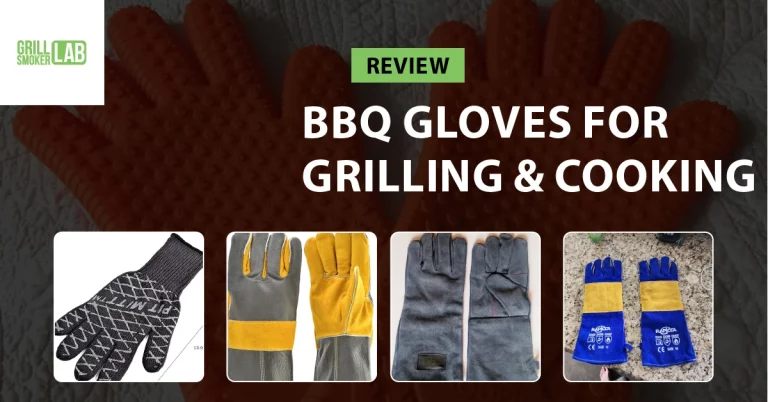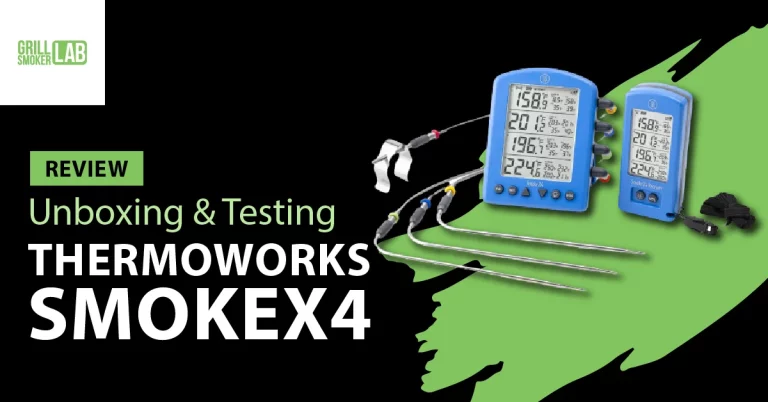Exploring the world of culinary arts, thermometers play an indispensable role, particularly when delving into the perfection of meat cooking. Ensuring the correct temperature is crucial to achieve that flawlessly cooked, succulent meat that everyone craves.
BEST MEAT THERMOMETERS
The quest for the best meat thermometer for smoker usage or even traditional cooking can be an intricate one. Various brands offer unique features aiming to cater to different cooking styles, with some prominently standing out in the market for their accuracy and durability. Best thermometers for smokers, for instance, should provide accurate readings and withstand the intense heat and smoky environment.
What’s Your Cooking Style?
Identifying your cooking style is pivotal in choosing a thermometer that aligns with your needs. The question like, “what thermocouple probe would be used to check the temperature of a grill?” often pops up, addressing the critical aspect of utilising the correct tools for precise temperature measurement to ensure scrumptious outcomes.
Meat Thermometers For BBQ, Grilling & Cooking
Navigating through types of meat thermometers provides insights into their distinctive functionalities and applications, pivotal in BBQ, grilling, and other cooking forms.
Signals by ThermoWorks: BEST THERMOMETER FOR GRILLING
Signals by ThermoWorks makes a significant mark as a leading choice among culinary enthusiasts, especially when contemplating what part of a meat thermometer reads temp accurately. This thermometer is not only renowned for its precise readings but also its robust build, ensuring it can sustain the high temperatures involved in grilling.
Fireboard 2: BEST THERMOMETER FOR SMOKING & BBQ
When we delve into smoking and BBQ, the Fireboard 2 emerges as the best thermometer for smoking. The inquiries like “which thermocouple probe should be used to check the temperature of a pork roast?” often navigate towards solutions like Fireboard 2, recognized for its high-end technology and ability to accurately measure meat, especially intricate dishes like a pork roast.
Smoke X: RUNNER-UP THERMOMETER FOR SMOKING/BBQ
Smoke X is not far behind and is acknowledged as the runner-up in the arena of thermometers suitable for smoking and BBQ. Boasting impressive longevity and the capability to provide precise readings, it can reliably answer queries about the temperature checking of various meats, ensuring culinary perfection.
ThermaPen MK4: BEST THERMOMETER FOR BAKING
Concluding with baking, ThermaPen MK4 takes the lead as the best thermometer for baking, recognized for its rapid and accurate readings and its vital role in ensuring baked goods are cooked to perfection every time. The ThermaPen MK4, with its robust construction and precision, makes it a valuable tool for bakers aiming for excellence in every bake.
Types of Meat Thermometers
Understanding the types of meat thermometers is fundamental in selecting a device that aligns seamlessly with your cooking and grilling needs. Whether you’re pondering on the best meat thermometer for smoker grills or considering what might be best suited for general cooking, each type of thermometer offers its unique perks catering to different culinary scenarios.
Instant Read
Instant-read thermometers, as the name implies, provide swift temperature readings, making them essential for chefs who require immediate results. When considering questions like “can I leave a meat thermometer in the oven?”, it’s important to note that instant-read thermometers are not designed for this purpose. These are typically used by inserting them into the meat immediately after it’s removed from the heat source to instantly gauge the internal temperature. They are admired for their precision and are crucial when you need to make quick judgments in the kitchen.
Bluetooth
Bluetooth meat thermometers leverage technology to enhance your cooking experience, often coming into play when considering the best thermometers for smokers. They sync with your smartphone or tablet, enabling you to monitor the temperature of your dishes remotely within a certain range. Especially beneficial for lengthy cooking sessions (like smoking or slow roasting), you can attend to other tasks while keeping a close eye on the meat’s temperature via a dedicated app, ensuring you never miss the moment when your meat reaches its perfect doneness.
Wi-Fi
Wi-Fi meat thermometers take the technological aspect a step further. Unlike Bluetooth thermometers, Wi-Fi versions allow you to monitor your cooking from an unlimited range, as long as both the thermometer and your device have internet access. This could be particularly handy for thermopro ambient probe users who wish to manage the ambient temperature of their smoker or grill from afar, ensuring that the meat is being cooked under optimal conditions even when you need to step away from the grill or smoker.
Wireless Probes
Wireless probe thermometers are designed for those who prefer a more traditional approach without the need to utilise smart devices. These typically come with a separate wireless display that shows the temperature readings. They are particularly useful for oven roasting or when using a smoker, as they can stay inside the meat while it cooks, transmitting the temperature data wirelessly to the display. Questions like “which thermocouple probe should be used to check the temperature of a pork roast?” can be aptly answered with a wireless probe, ensuring internal temperatures are consistently monitored for perfect, juicy results.
Why You Need a Good Thermometer
Ensuring the perfect cook on your meat is as much a science as it is an art, especially when precision is crucial to achieving the ideal doneness without compromising on safety and flavour.
Hacks Just Won’t Hack It
There are traditional hacks that have been utilised by chefs and home cooks for years to ascertain the doneness of meat. However, the reliability of these methods can be quite varied and, often, they just won’t cut it when accuracy is paramount.
1. Juices Running Clear
One common method is observing whether the juices run clear when the meat is pierced. While this might sometimes correlate with the meat being cooked, it’s not a foolproof method and doesn’t guarantee that it has reached a safe temperature to eliminate potential harmful bacteria.
2. Hand Test
The hand test, usually used for steaks, involves comparing the feel of the meat to the flesh on your hand. Again, while this can sometimes give a rough indication, it’s highly subjective and doesn’t ensure that your steak is cooked to your desired level of doneness.

Using reliable thermometers negates the need for such hacks, providing accurate readings and ensuring both the safety and culinary perfection of your meals.
Types of Thermometers

Choosing a thermometer often means navigating through various options, each offering their unique advantages and potential downsides.
Bi-metal
Bi-metal thermometers utilise a bimetallic coil which expands when heated, moving a needle along a gauge to provide a temperature reading. They’re often found built into grills or ovens and are popular for their durability and the convenience of providing a permanent temperature display. However, the best meat thermometers made in the USA or elsewhere often use other technologies due to some limitations of bi-metal thermometers, such as potentially slower and less accurate readings.
Digital Thermometers
Digital thermometers, often coming in forms like the ThermaQ Meathead Kit, are celebrated for their rapid and precise readings. They utilise electronic heat sensors to provide a digital reading, often in a matter of seconds. Especially when questioning “what part of the meat thermometer reads temp” accurately and swiftly, digital thermometers frequently top the list for their reliability and speed.
Why the Bi-metal Thermometer That Came with Your Grill Sucks
Despite the ubiquity of bi-metal thermometers in grilling apparatus, they often get a bad rap among culinary enthusiasts. The inherent design, which depends on the physical expansion and contraction of the bimetallic coil, can lag in responsiveness and offer less accurate readings compared to their digital counterparts. Moreover, they often only provide an ambient temperature, which might not be a true reflection of the meat’s internal temperature, leading cooks to sometimes misjudge the doneness of their dishes.
By understanding the strengths and weaknesses of various thermometer types and acknowledging the sheer importance of accurate temperature readings in cooking, chefs and home cooks alike can significantly elevate the consistency and quality of their dishes Smart Thermometers – Buyer’s Guide
In an era where technology melds with every aspect of daily living, smart thermometers have emerged as a pivotal tool in modern culinary endeavours. Ensuring your meat and grills reach and maintain the desired temperature is paramount for optimal results, which begs the question: How do you select the best smart thermometer for your needs? Here’s a guided breakdown:
Smart Thermometers – Buyer’s Guide
- Single-Probe Thermometers: These are best suited for smaller grilling sessions or when cooking a single piece of meat.
- Multi-Probe Thermometers: A must for serious BBQ enthusiasts or those who often grill multiple items simultaneously, ensuring each piece reaches its ideal temperature without constant manual checking and swapping probes.
Remember that considering the best meat thermometer for smoker grills often means opting for multiple probes to manage varying cooking zones effectively.

2. How Accurate Are The Probes (And What Type Are They?
Probe accuracy is non-negotiable for precise cooking and safety. You may find yourself wondering, “what thermocouple probe would be used to check the temperature of a grill?” or “which thermocouple probe should be used to check the temperature of a pork roast?” This essentially boils down to the accuracy and type of the probes.
- Thermocouples: Known for their rapid and accurate readings. Essential when speed is crucial in preventing over or under-cooking.
- Thermistors: While they might not read temperatures as rapidly as thermocouples, high-quality thermistor probes still offer commendable accuracy and are often more budget-friendly.
Ensure that the probes are suited for what you’ll be cooking most and consider their durability, especially under high-heat conditions.
- Connectivity: Ensure that the thermometer can maintain a stable connection, whether through Wi-Fi or Bluetooth, for consistent monitoring.
- App Integration: Check if it has a dedicated app that is compatible with your device and offers a user-friendly interface.
- Alerts and Notifications: Look for options that allow you to set temperature alerts, ensuring you’re informed the moment your meat hits the desired temperature.
- Temperature Range: A wide temperature range provides versatility in cooking various types of meat and dishes.
- Data Logging: Some smart thermometers log cooking data, allowing you to review and refine your cooking processes over time.
FAQs
Navigating through the world of cooking and grilling with thermometers might present a series of questions, especially when it comes to ensuring the longevity and accurate functioning of your devices. Here are some common questions and their answers:
Can You Stick a Meat Thermometer in the Oven?
A query commonly pondered by chefs and home cooks alike, “Can I leave meat thermometer in the oven?”, has a relatively straightforward answer. Yes, you can, but it should be an oven-proof thermometer. Some thermometers are designed to remain in the meat while it cooks in the oven, providing real-time temperature readings and ensuring you pull your dish out at the exact right moment. Always check the manufacturer’s instructions to ensure your thermometer is oven-safe.
What is the Proper Way to Use a Thermometer?
Utilising a meat thermometer correctly is paramount for accurate readings:
- Insert the probe into the thickest part of the meat, avoiding fat or bone as these can give inaccurate readings.
- Ensure that the probe is inserted at least an inch deep (or as per the manufacturer’s instructions) for a consistent and accurate reading.
- Allow a moment for the reading to stabilise before recording the temperature.
How Do You Calibrate a Meat Thermometer?
Calibration is essential for maintaining accuracy:
- Prepare a glass of ice water and ensure it’s thoroughly mixed.
- Insert your thermometer and wait for a stable reading.
- The thermometer should read 32°F (0°C). If it doesn’t, consult the manual to understand how to reset or adjust it (some thermometers have a calibration knob or a recalibration function in the app).
How To Monitor Internal Temperature of Oven|Grill?
Monitoring the internal temperature of your oven or grill is pivotal for achieving a perfectly-cooked meal:
- Place an oven/grill-safe thermometer inside and ensure it’s placed in a position where you can read it without opening the oven/grill (to avoid temperature fluctuations).
- Alternatively, using a device with external readouts or smart features that can communicate with an app, like a ThermoPro ambient probe, can provide constant monitoring without requiring you to open the oven or grill.
How Do I Leave the Probe in When Cooking?
When you’re contemplating “which thermocouple probe should be used to check the temperature of a pork roast” and aiming to leave it in while cooking:
- Ensure the probe and its wires (if any) are heat-resistant and designed to withstand the cooking temperatures.
- Insert the probe into the meat, ensuring it’s in the thickest part and away from bone or excessive fat.
- Route any wires so that they are not in contact with very hot surfaces or flames to prevent damage.
- Monitor the temperature either via a readout on the device or through an app, if it has smart capabilities.









